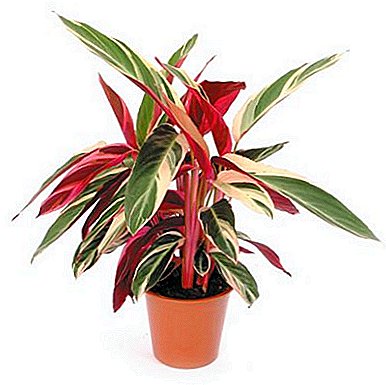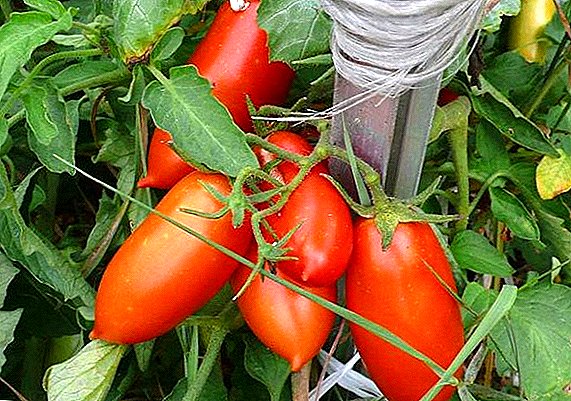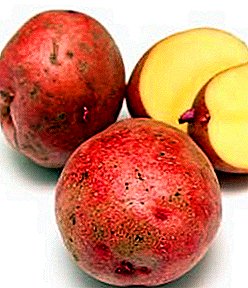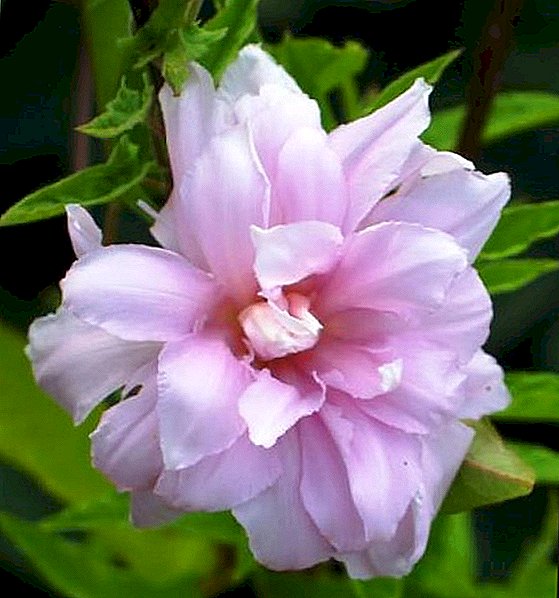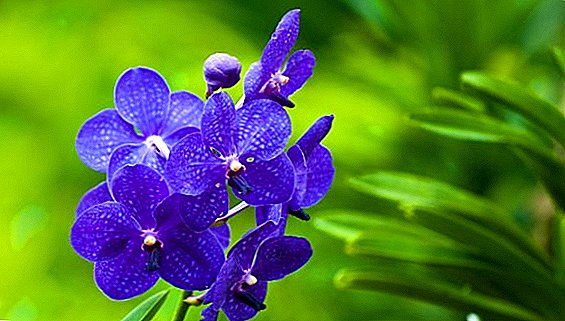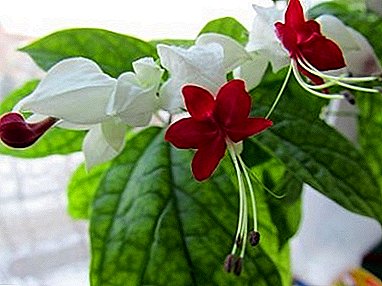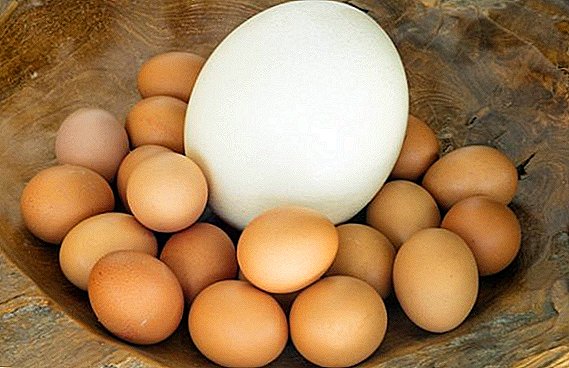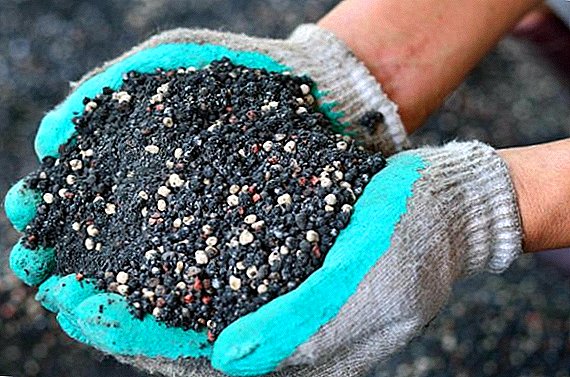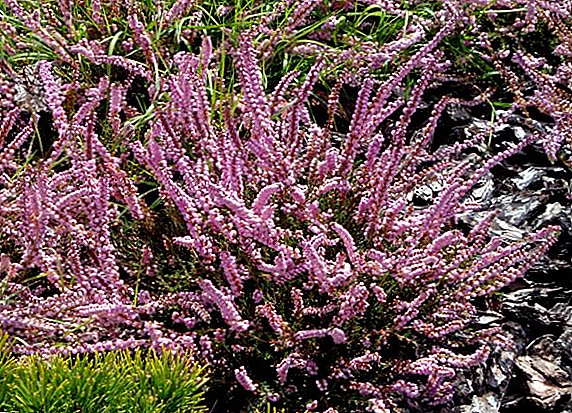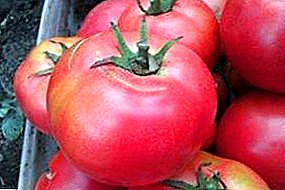
Tomato variety "Japanese Rose" is a great choice for lovers of sweet pink fruits.
Tomatoes are obtained sugary and juicy, while the plant does not require too complex care. Productivity is consistently high, it is better to grow tomatoes in greenhouses.
A detailed description of the variety, its characteristics and cultivation features can be found in this article.
Tomato "Japanese Rose": description of the variety
| Grade name | Japanese Rose |
| general description | Mid-season high-yielding determinant variety |
| Originator | Russia |
| Ripening | 105-110 days |
| The form | Heart-shaped |
| Colour | Pink |
| Average tomato mass | 100-150 grams |
| Application | Dining room |
| Yield varieties | 6 kg from a bush |
| Features of growing | Agrotechnika standard |
| Disease resistance | Resistant to major diseases |
"Japanese Rose" - mid-season high-yielding variety. The bush is determinant, stem-type, the height does not exceed 60-80 cm. The number of leaves is moderate, pinching is not required.
During the fruiting period, the bush looks very elegant, rich pink tomatoes, collected in small brushes of 5-6 pieces, resemble lanterns or hearts.
Fruits of medium size, weighing 100-150 g, rounded-heart-shaped, with a pointed tip. The fruit stem has ribbing. The skin is thin, but strong, reliably protecting ripe tomatoes from cracking. The color of ripe tomatoes is warm crimson-pink, monophonic.
| Grade name | Fruit weight |
| Japanese rose | 100-150 grams |
| Sensei | 400 grams |
| Valentine | 80-90 grams |
| The Tsar Bell | up to 800 grams |
| Fatima | 300-400 grams |
| Caspar | 80-120 grams |
| The Golden Fleece | 85-100 grams |
| Diva | 120 grams |
| Irina | 120 grams |
| Batyana | 250-400 grams |
| Dubrava | 60-105 grams |
The flesh is juicy, moderately dense, sugary, little seeds. The taste is very pleasant, delicate, rich and sweet. The high content of sugars and trace elements makes tomatoes ideal for baby food.
 We bring to your attention a few useful and informative articles about growing tomatoes.
We bring to your attention a few useful and informative articles about growing tomatoes.Read all about indeterminant and determinantal varieties, as well as tomatoes that are resistant to the most common diseases of the nightshade.
A photo
Visually familiar with the variety of tomatoes "Japanese Rose" can be in the photo below:



Origin and Application
The variety of the Russian selection, is recommended for cultivation in the closed soil (greenhouses or film hotbeds). In regions with a warm climate, bushes can be planted on open beds. The yield is high, from the bush you can get up to 6 kg of selected tomatoes. Harvested fruits are well stored and transported.
| Grade name | Yield |
| Japanese rose | 6 kg from a bush |
| Solerosso F1 | 8 kg per square meter |
| Union 8 | 15-19 kg per square meter |
| Aurora F1 | 13-16 kg per square meter |
| Red dome | 17 kg per square meter |
| Aphrodite F1 | 5-6 kg from a bush |
| King early | 12-15 kg per square meter |
| Severenok F1 | 3.5-4 kg from a bush |
| Ob domes | 4-6 kg from a bush |
| Katyusha | 17-20 kg per square meter |
| Pink meaty | 5-6 kg per square meter |
Tomatoes can be eaten fresh, used to make salads, soups, side dishes, mashed potatoes. From ripe fruits it turns out tasty sweet juice of a beautiful pink shade. It is suitable for children, as well as people who are allergic to red fruit.
Advantages and disadvantages
The main advantages of the variety include:
- tasty and juicy fruits;
- good yield;
- disease resistance.
There are no flaws in the variety. To achieve success, it is important to observe the regime of watering and to feed tomatoes abundantly with mineral fertilizers.
Features of growing
 "Japanese Rose" propagated by seedlings. Seeds are planted before planting with a growth stimulator.
"Japanese Rose" propagated by seedlings. Seeds are planted before planting with a growth stimulator.
It is not necessary to disinfect the planting material, it must be processed before it is sold.
The soil for seedlings is composed of a mixture of sod land with humus and washed sand. Seeds are sown in a container with a depth of 1.5-2 cm.
For germination requires a stable temperature of 23-25 degrees.
We bring to your attention a series of articles on how to grow tomato seedlings in different ways:
- in twists;
- in two roots;
- in peat tablets;
- no picks;
- on Chinese technology;
- in bottles;
- in peat pots;
- without land.
When sprouts appear on the soil surface, the container is exposed to the sun or under fluorescent lamps. Young plants are watered with warm, settled water from a spray bottle or a small-cell watering can.
Transplantation in the greenhouse is carried out in the first half of May; bushes are moved to open beds closer to June. The soil should be loose, mineral complex fertilizer is spread out on the holes (1 tbsp each). On 1 square. m can plant 3 plants.
Watering infrequent, but plentiful, only warm water is used. Tomatoes do not require tying up and radical pinching, but it is recommended to remove the extra side shoots that weaken the plant. For the season, "Japanese Rose" requires 3-4 dressing full complex fertilizer.
 See also: how to plant tomatoes in the greenhouse?
See also: how to plant tomatoes in the greenhouse?What is mulching and how to conduct it? What tomatoes need pasynkovanie and how to do it?
Diseases and pests
The variety is not too susceptible to late blight, Fusarium, Verticillus and other typical nightshade. To protect the landing, it is important to think about prevention. Before sowing, the soil is thoroughly disinfected with a solution of potassium permanganate or copper sulfate.
Young plants are recommended to spray at least once a week with phytosporin, which prevents fungal diseases.
 When the first signs of late blight appear, the affected parts are destroyed and tomatoes are treated with copper-containing preparations.
When the first signs of late blight appear, the affected parts are destroyed and tomatoes are treated with copper-containing preparations.
Get rid of the spider mite, whitefly or thrips will help insecticides, decoctions of celandine or onion peel. Ammonia, diluted in water, kills slugs, and soapy water perfectly destroys aphids.
"Japanese Rose" - a real find for gardeners who love to experiment with new varieties. With minimal care, she will thank for a good harvest, and delicacy fruits will appeal to all home, especially children.
| Early maturing | Middle late | Medium early |
| Crimson Viscount | Yellow banana | Pink Bush F1 |
| The Tsar Bell | Titanium | Flamingo |
| Katya | F1 slot | Openwork |
| Valentine | Honey salute | Chio Chio San |
| Cranberries in sugar | Miracle of the market | Supermodel |
| Fatima | gold fish | Budenovka |
| Verlioka | De barao black | F1 major |


